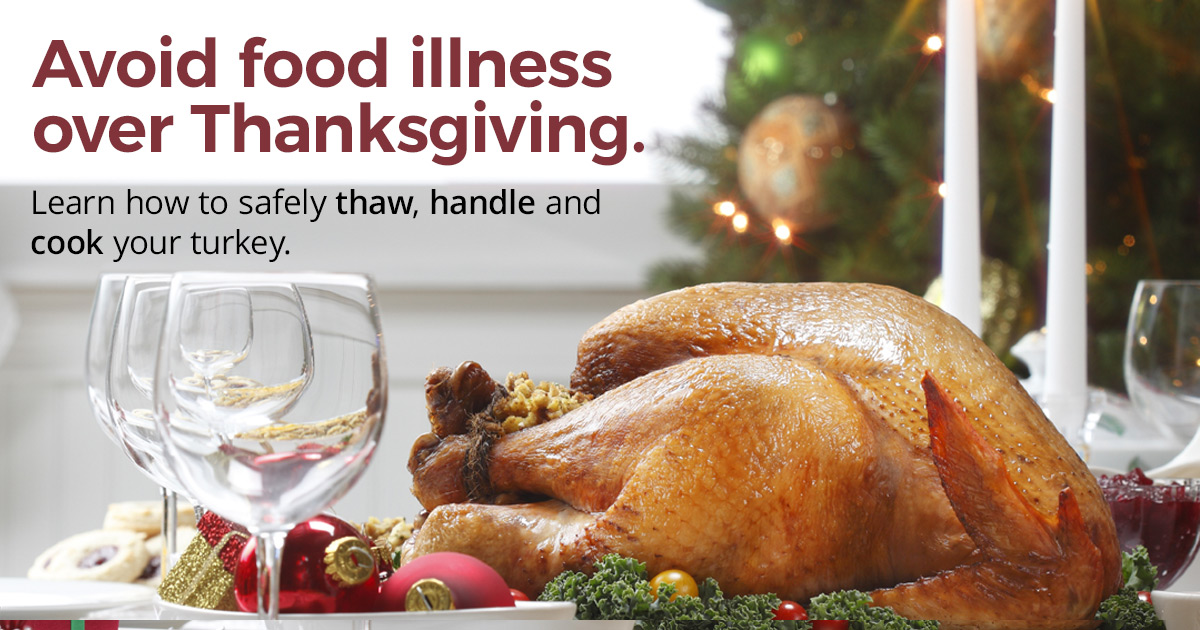To ensure you’re receiving the most up-to-date and accurate information, please choose the correct agency from the homepage. The DHEC website is no longer being updated and will be permanently unavailable Dec. 31, 2024.
Handle Your Turkey, Leftovers Safely This Thanksgiving

As you gather with family and friends to break bread this Thanksgiving Day, DHEC wants to make sure you avoid any food-handling issues that could result in illness.
According to the Centers for Disease Control and Prevention (CDC), food-handling errors and inadequate cooking are the most common problems that lead to poultry-associated foodborne disease outbreaks.
Here are some tips to consider before, during and after you fry your turkey.
Don’t buy the bird too early
If you bought your turkey fresh, keep it in the refrigerator (40° F or less) and cook it within one to two days. If you bought your turkey frozen, to thaw it safely in the refrigerator, allow for a thaw rate of 4-5 pounds per day. For example, for a 12-pound bird it will take 2.5 to 3 days in the refrigerator to thaw. It should then be cooked within one to two days.
You can thaw your turkey in the refrigerator, a sink of cold water that is changed every 30 minutes, or in the microwave. Never thaw your turkey by leaving it out on the counter. A frozen turkey is safe indefinitely, but a thawing turkey must defrost at a safe temperature. When the turkey is left out at room temperature for more than two hours, its temperature becomes unsafe as it moves into the danger zone between 40° F and 140° F, where bacteria can grow rapidly.
Safely Cook Your Turkey
Set the oven temperature to at least 325° F. Place the completely thawed turkey with the breast side up in a roasting pan that is 2 to 2-1/2 inches deep. Cooking times will vary depending on the weight of the turkey. To make sure the turkey has reached a safe internal temperature of 165° F, check by inserting a food thermometer into the center of the stuffing and the thickest portions of the breast, thigh, and wing joint. Let the turkey stand 20 minutes before removing all stuffing from the cavity and carving the meat.
Turkey Frying
When working with large amounts of hot oil, select a cooking vessel large enough to completely submerge the turkey without it spilling over. The oil should cover the turkey by 1 to 2 inches. Select a safe location outdoors for deep frying a turkey. Heat the cooking oil to 350° F. Very slowly and carefully lower the turkey into the hot oil. Monitor the temperature of the oil with a thermometer during cooking. Never leave the hot oil unattended.
Allow approximately 3 to 5 minutes of cook time per pound. When reaching approximate time needed, check to see if the turkey is safely cooked by removing the turkey from the oil, draining the oil from the cavity and with a food thermometer, check the internal temperature of bird. DO NOT test the temperature while the turkey is submerged in oil.
Monitor Your Leftovers
After dinner, remember to follow the two-hour rule. For safety, do not leave the turkey or other perishable foods sitting out at room temperature longer than two hours. Refrigerate your leftovers at 40° F or colder as soon as possible to prevent food poisoning.
If you have any questions about keeping your leftovers safe, you can check out the USDA’s FoodKeeper app. It’s available on Android and Apple devices. The app provides storage timelines for the refrigerator, freezer, and pantry, for more than 500 products.